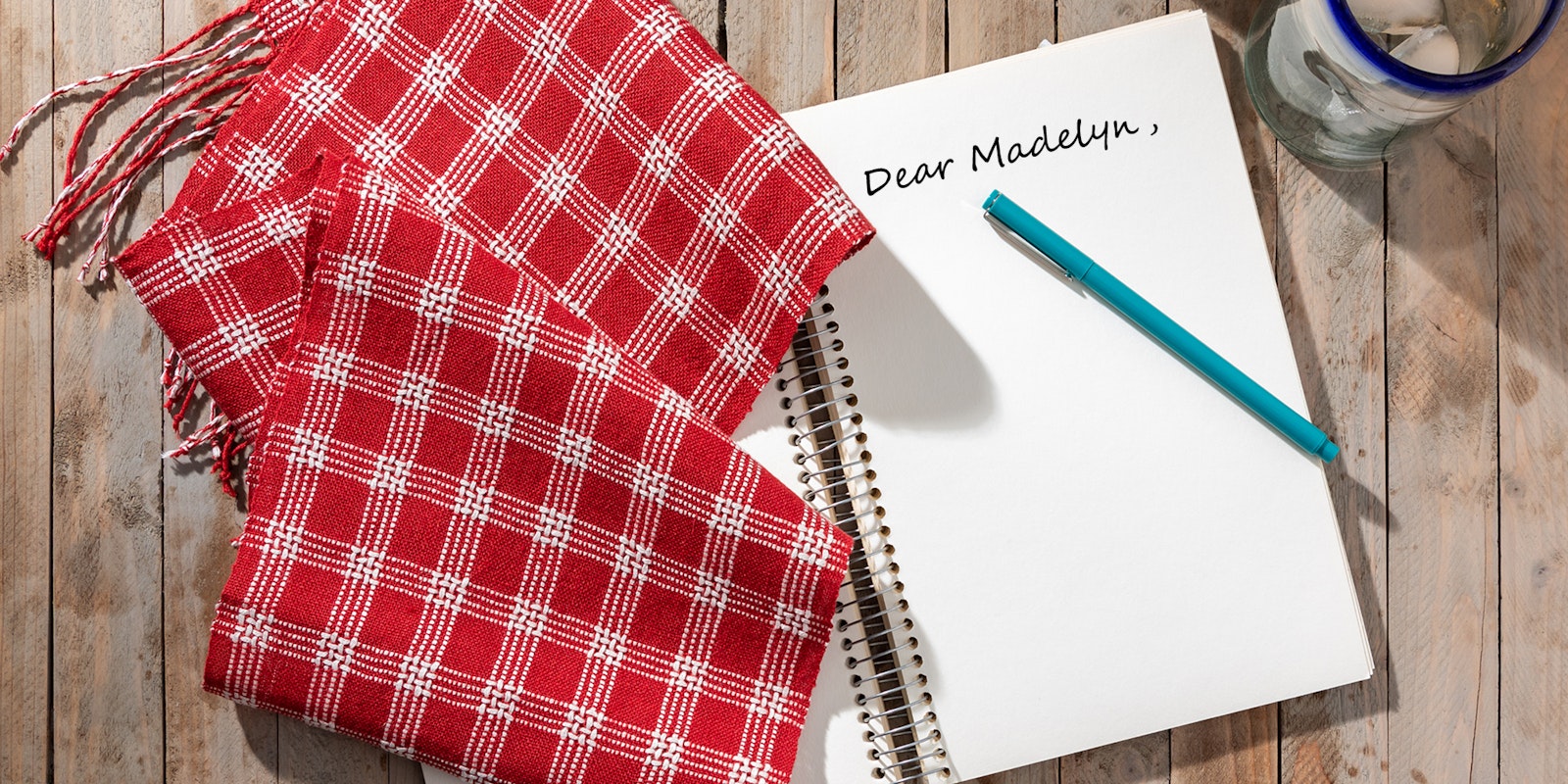Hi Madelyn!
Before I go completely daffy, I need help with one of Marguerite Davison's drafts "Sun, Moon and Stars," A Handweaver’s Pattern Book, Overshot Novelties, page 147). I think I understand that I have to reverse the tie-up. Correct me if I'm wrong, but I'm having trouble with the tabby concept. I've read the introduction that explains it, and I think I am supposed to weave 3 picks on the same pattern treadle. Do I weave tabby between each of those picks?
I may be making this more complicated then it is; but I have found no one who can explain it so it makes sense. I'm a very visual person so really need your help.
– Adonna
Hi Adonna!
Congratulations! You have successfully gone through both of the Davison Initiation Rites. The first Rite is figuring out that her tie-ups are for a counterbalance loom and therefore indicate the shafts that go down. In order to follow her treadling as written on a jack loom, you must raise the shafts that are not marked in her tie-ups, so that her marked shafts remain down. You therefore tie up the blanks (to rise) instead of the marked shafts.
The second Rite is to notice and then understand the term "Use Tabby". She does explain this on page XI with a diagram similar to the one I'm showing here in Figure 1, but she doesn't exactly specify what you actually do. In other words, if you know what "Use Tabby" means, you'd understand what she says. But if you haven't a clue what it means, you might not. This seems to be an unfortunate truth about many weaving concepts. It's not easy to find words that accurately represent the reality they are trying to explain. However, even if Davison's words weren't perfectly clear, you did figure it out on your own.
 Left: Figure 1 Right: Figure 2
Left: Figure 1 Right: Figure 2
Figure 1 above shows the tie-up and a portion of the treadling for Sun, Moon, and Stars given in Davison. Figure 2 shows the corresponding tie-up for a jack loom and the full treadling for the section shown in Figure 1. You can see that if Davison gave the full treadlings for all of the overshot drafts in her book, the book would have been much, much thicker. And, even better, once you understand these drafts, it's really easier to keep track of where you are and see the development of the pattern using her shortcut method.
~Madelyn

